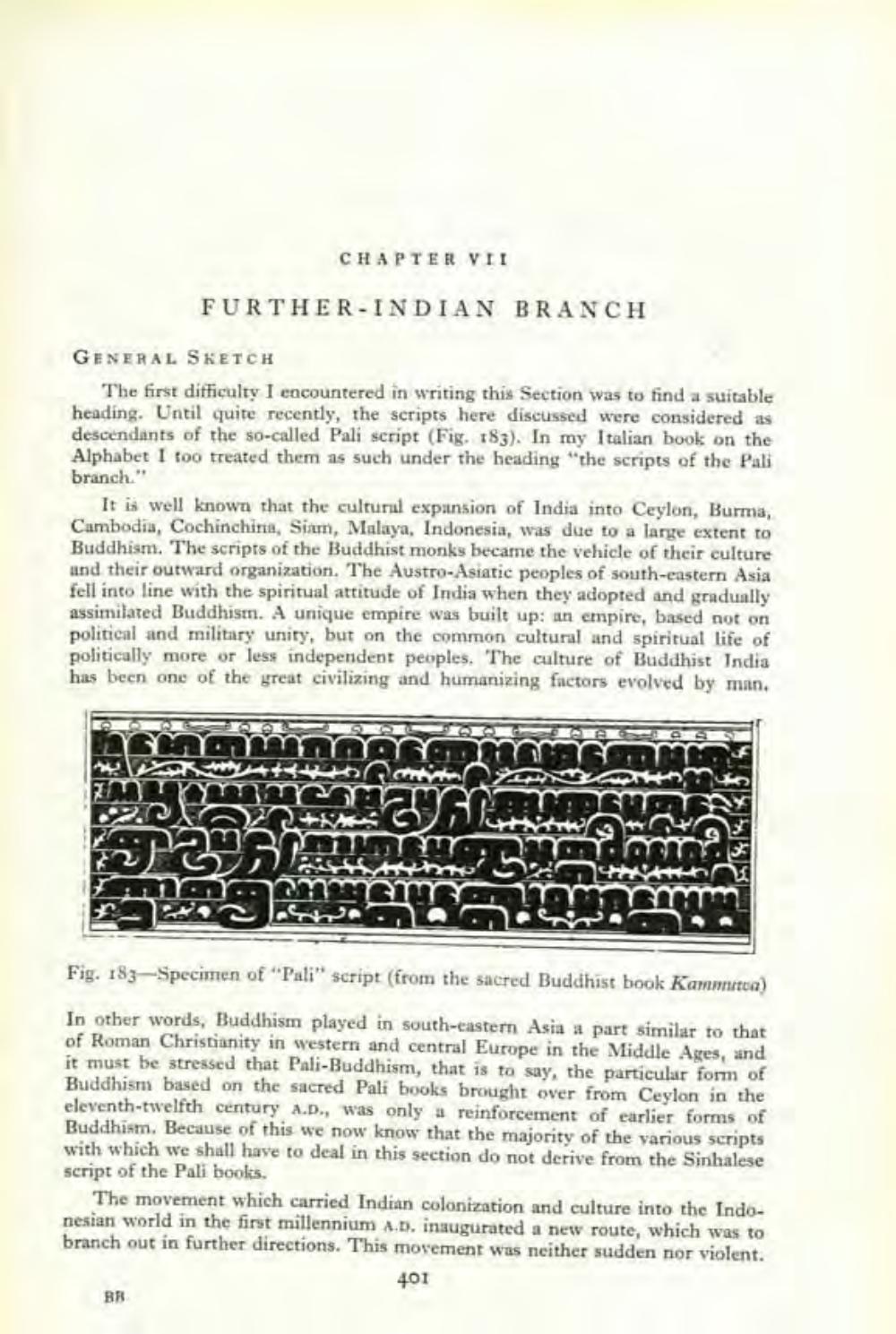________________
CHAPTER VII
FURTHER INDIAN BRANCH
GENERAL SKETCH
The first difficulty I encountered in writing this Section was to find a suitable heading. Until quite recently, the scripts here discussed were considered as descendants of the so-called Pali script (Fig. 183). In my Italian book on the Alphabet I too treated them as such under the heading "the scripts of the Pali
branch."
It is well known that the cultural expansion of India into Ceylon, Burma, Cambodia, Cochinchina, Siam, Malaya, Indonesia, was due to a large extent to Buddhism. The scripts of the Buddhist monks became the vehicle of their culture and their outward organization. The Austro-Asiatic peoples of south-eastern Asia fell into line with the spiritual attitude of India when they adopted and gradually assimilated Buddhism. A unique empire was built up: an empire, based not on political and military unity, but on the common cultural and spiritual life of politically more or less independent peoples. The culture of Buddhist India has been one of the great civilizing and humanizing factors evolved by man.
PAYRO
BR
Mayblam
ANCING
Fig. 183-Specimen of "Pali" script (from the sacred Buddhist book Kammutva)
In other words, Buddhism played in south-eastern Asia a part similar to that of Roman Christianity in western and central Europe in the Middle Ages, and it must be stressed that Pali-Buddhism, that is to say, the particular form of Buddhism based on the sacred Pali books brought over from Ceylon in the eleventh-twelfth century A.D., was only a reinforcement of earlier forms of Buddhism. Because of this we now know that the majority of the various scripts with which we shall have to deal in this section do not derive from the Sinhalese script of the Pali books.
The movement which carried Indian colonization and culture into the Indonesian world in the first millennium A.D. inaugurated a new route, which was to branch out in further directions. This movement was neither sudden nor violent.
401




